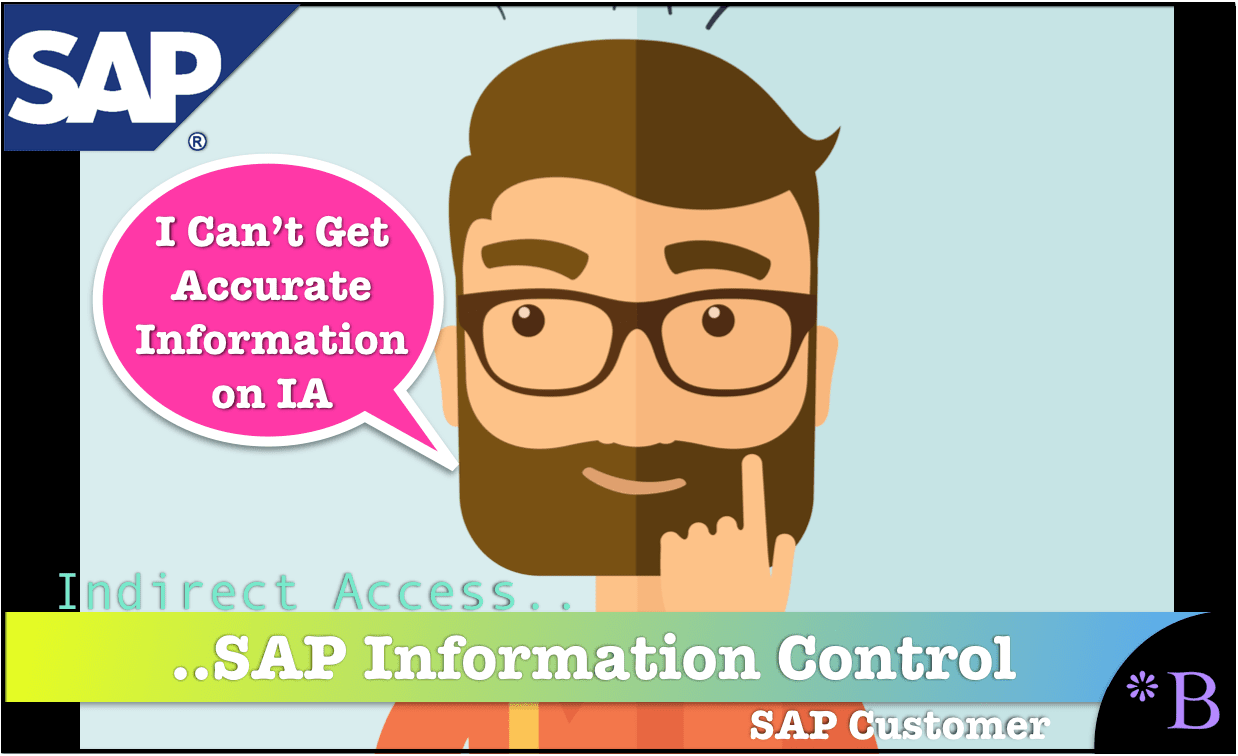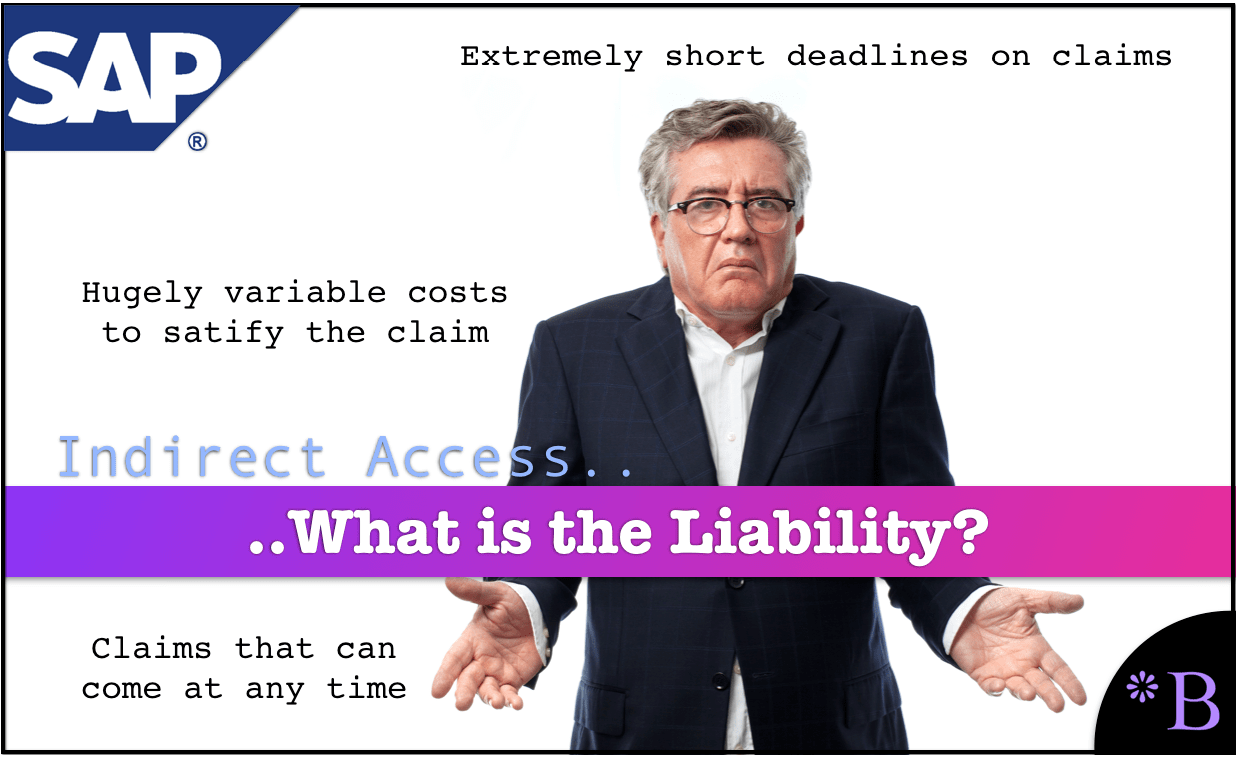An Analysis of UpperEdge’s Article on Indirect Access Announcement
Executive Summary
- UpperEdge wrote an article about SAP’s indirect access announcement.
- We evaluate the accuracy of this UpperEdge article.

Introduction
This is an analysis of UpperEdge’s article on the announcement on the part of SAP on indirect access titled Bill McDermott is the Best Salesperson in the world.
Our References for This Article
If you want to see our references for this article and other related Brightwork articles, see this link.
Notice of Lack of Financial Bias: We have no financial ties to SAP or any other entity mentioned in this article.
- This is published by a research entity, not some lowbrow entity that is part of the SAP ecosystem.
- Second, no one paid for this article to be written, and it is not pretending to inform you while being rigged to sell you software or consulting services. Unlike nearly every other article you will find from Google on this topic, it has had no input from any company's marketing or sales department. As you are reading this article, consider how rare this is. The vast majority of information on the Internet on SAP is provided by SAP, which is filled with false claims and sleazy consulting companies and SAP consultants who will tell any lie for personal benefit. Furthermore, SAP pays off all IT analysts -- who have the same concern for accuracy as SAP. Not one of these entities will disclose their pro-SAP financial bias to their readers.
The Quotes
For those of you that had a chance to read our blog post the night before the SAPPHIRE 2017 kick-off, you’ll agree that we made a pretty accurate prediction that SAP’s CEO Bill McDermott would leverage his prior theme of empathy to address customer concerns regarding indirect use.
What Did SAP Provide?
“At the end of the day, what did SAP really provide when it comes to indirect use? For those executives not able to attend and for those who prefer scanning a blog article such as this, I offer the following summary considerations. You should also check out the set of questions we recommend customers ask SAP regarding their recent indirect use policy announcement.”
Transparency
“SAP customers have always been asking for transparency, not only with respect to roadmaps, but also with respect to licensing, pricing, and more importantly, clarity of SAP’s use definition. Under the veil of transparency, SAP reinforced its commitment to transparency relative to roadmaps and product direction, but it provided no clarity with respect to its definition of use and the criteria for when indirect access to SAP’s software amounts for use. From SAP’s point of view, use is use – there is no such thing as indirect use. Unfortunately, there will be no change in the definition of use. It will continue to be “anything that invokes the processing capabilities of the SAP software.”
Bottom Line: The definition of use will stay the same. It is ambiguous and does not provide any guidance as to the degree of use and how to address corresponding value. As such, SAP customers will continue to struggle with figuring out whether or not their interconnected systems are license-compliant given how they are using their software. Customers will only be approached by SAP with minor clarifying contract changes that also include incentives to move to S4.”
SAP must have opacity and, therefore, not openness on the topic of indirect access.
SAP actively keeps the market off balance as to what indirect access is. SAP would like everyone to think that its definition of indirect access is the industry standard definition when, in fact, the opposite is the case. SAP won’t come out and say that they intend to mystify people with indirect access, so it, as pointed out by Dave Blake, extolls the virtues of transparency by not providing any.
Concessions and Balance
“I agree with Mr. McDermott that protecting intellectual property is important and that it must be balanced with a customer’s ease of doing business.
*Yes, but SAP is not actually protecting its intellectual property. That would be like saying you are protecting your personal property by accusing others of breaking into your house and stealing when in fact it did not occur. SAP’s spin here is to pretend they are the victims, when they are the aggressors. They created a fallacious concept of indirect access to pressure companies to buying SAP’s software in circumstances when SAP lost the software selection. SAP never wants the actual indirect access charge; they want the software sale that is the reaction to the indirect access charge.
In his opening keynote, Bill McDermott used this as an opportunity to introduce simplified pricing for order-to-cash and procure-to-pay, ultimately linking those to the measurable business metric of orders.
He also used it as an opportunity to communicate that SAP will not charge customers for a static read of data. Subsequent communications from SAP highlighted that customers who take a proactive approach to engaging SAP to determine full compliance for indirect use will not have to worry about paying back maintenance.
Bottom Line: SAP did not really offer anything. In our experience, order-to-cash and procure-to-pay scenarios involving indirect use have historically been resolved and negotiated under an “orders” business metric because everyone involved in the negotiation ultimately agreed that it was unreasonable to apply a user license. It made sense for SAP to lead with this from a positioning point, but in our experience, customers landed on orders as the metric for being compliant so I am not sure how much was conceded here.”
Once again, this is correct. Furthermore, this is simply another way of charging for SAP’s version of indirect access. Any independent party would question why customers are paying for SAP’s indirect access version that matches no other vendor’s definition.
“The same logic applies to the waiver of back maintenance. It’s hard for SAP to look a customer in the eye and say, “I know we have been aware of how you have been using your systems for years, but now we need to enforce this indirect use policy that was not clearly spelled out in our agreements and also charge you back maintenance.” Back maintenance fees can be huge and SAP is banking on this empathy pull to get anxious SAP customers to the table.”
Right, it is a threat designed to coerce customers to self-report.
“With regard to static data, SAP customers have always owned their data. I have yet to see an SAP agreement where they claimed to own a customer’s data. That is not the issue. This issue lies in the additional fees that SAP is looking to extract based upon how a customer uses the data stored in SAP with non-SAP systems. Extracting data from SAP to another system in a non-real-time manner with no updates to the data never amounted to use in the first place, so again, what was really provided here?”
SAP has not necessarily claimed to own a customer’s data, but they seem to be moving in that direction.
HANA, in particular, has restrictions of use and access that no other database has. The issues related to how SAP controls data, once placed in HANA, are quite convoluted and require in-depth analysis to understand. They are multi-dimensional and can even be connected to the tools available from SAP. That is, it is not necessarily contractual but technological. Secondly, many products need to purchase along with HANA, but that customers don’t learn about it until after they have purchased HANA.
The phrase “you own your data” does not mean anything if SAP puts all manner of indirect access and other controls, such as restricting extracting through available tools that put SAP in the driver’s seat with controlling access to the data.
I am making Chicken Salad out of Chicken $#&!
“When it comes to indirect use and all the customer buzz and anxiety that has continued to percolate since the Diageo and AB InBev claims became public, SAP had no choice but to tackle the issue head on during its biggest customer gathering. The fact that Bill McDermott addressed the issue within the first few minutes of his opening keynote reinforces how significant the issue has become for SAP and how important it is to show some balance. It did not appear from the extremely limited round of applause the audience provided that customers were feeling the empathy and balance.”
SAP is dealing with blowback from quite flagrantly taking advantage of its customers. This announcement is entirely directed towards deceiving customers that something will change regarding SAP’s policy on indirect access when next to nothing has.
“Bottom Line: A lot of mayonnaise has been spread on the indirect use issue so far at SAPPHIRE. SAP just may have managed to take one of the more concerning issues for its customer base and turn it into one of the greatest sales and product migration opportunities in the company’s history. Think of all the SAP account executives and how they can now approach their customers with the opportunity to take advantage of SAP’s new simplified indirect use pricing without the worry of paying back maintenance. Bill McDermott is the penultimate salesperson and it will be very interesting to see if this empathetic approach to indirect use will yield the engagement SAP desires and the follow-on upsell opportunities. Can I have more mayo, please?!”
Exactly. This announcement is designed to appease and to have customers lower their guard. I have Brightwork’s take on the SAP indirect access announcement at SAPPHIRE.
Conclusion
We give UpperEdge a 9.5 out of 10 for accuracy in this article.

The Problem: Secrecy Around Indirect Access
Oracle, SAP, and their consulting partners, ASUG, and the IT media entities all have something in common. They don’t want indirect access understood. Media outlets like Diginomica are paid to distribute PR releases as articles, as we covered in the article SAP’s Recycled Indirect Access Damage Control for 2018. The intent is to lower SAP customers’ concern around indirect access so that indirect access is underestimated, as we covered in the article The Danger in Underestimating SAP Indirect Access.

The primary providers of information in the SAP space are all financially linked to SAP. SAP does not want indirect access understood, so these entities do as they are told by SAP.